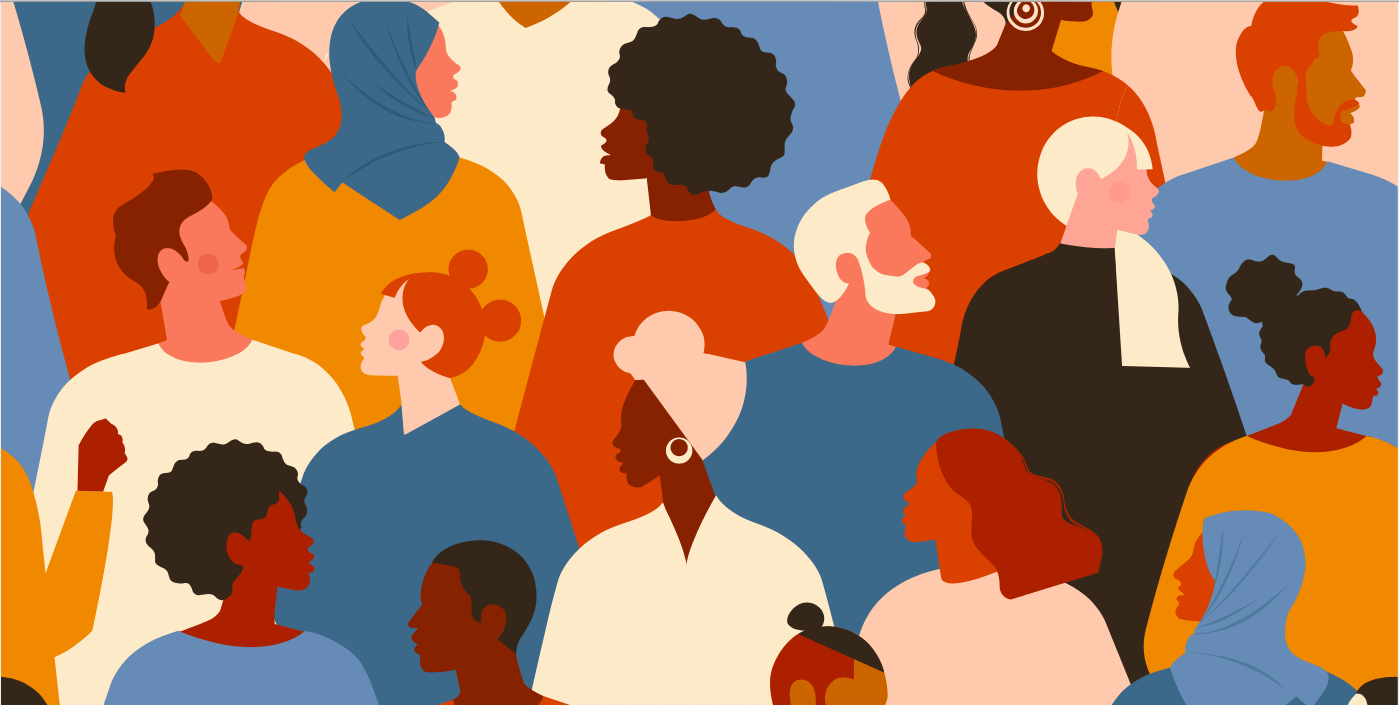Everything is not all right. That’s what the worldwide protests against racially motivated abuse have made clear. And it also applies to the working world — abuse doesn’t begin when people start fighting. Subtle abuse is visible in the daily discrimination that many people experience, in spite of anti-discrimination laws and even though diversity management has long been on the social agenda.
Many companies have reacted to the protests against this inequality by taking a stand, disclosing their own efforts, and applauding improvements. Many have also been criticized for giving the impression that solidarity and diversity are just nice words for their public image but aren’t lived internally. One thing is clear: It’s not about what the PR department writes on social media, but what a company is doing concretely to work against structural discrimination.
Two central insights about diversity
One of Babbel’s core values is that diversity makes us stronger. Employees from more than 50 countries work to get people excited about learning languages and more sensitive to cultural diversity. But without a doubt, even a diverse company like Babbel must continually work on itself and question its own values and actions.
Promoting a company culture where diversity is lived naturally and discrimination has no place concerns us all — every single day. It’s a long-term task where well-intentioned but aimless activism isn’t very helpful. Sustainable, structural changes require perseverance and a solid foundation.
Insights from research can contribute and help systematically approach long-term diversity and make it a reality. The next sections introduce a few important insights from researchers and specialists in the diversity and discrimination space. They can help you drive a diverse and inclusive culture in your company.
First: Diversity is worth it
Legally, no one can be disadvantaged because of their sex, ethnic origin, age, disability, sexual orientation, or religion. Practicing diversity also means that everyone earns the same opportunities, regardless of those characteristics. But diversity management often goes beyond that and attempts, in the interest of the company, to constructively use the different perspectives that people from different social backgrounds bring with them.
It’s long been known empirically and confirmed through recent research that diversity fundamentally pays off for companies. Success for a company is connected to whether it’s diverse in terms of gender and ethnic origin. Diversity fosters complex thinking and promotes effective decision-making, innovation, and economic growth.
The reasons for that are obvious, according to diversity researcher Katherine Phillips: Diversity leads to productive conflicts, where people are confronted with different opinions and perspectives. Since diverse teams approach topics more carefully and tend to question themselves, it leads to better results — even if the path to those results is often more demanding in everyday business.
Interestingly, Phillips also found that diverse groups view their results less confidently than more homogenous groups. They don’t consider themselves to be effective, even if they objectively are. Phillips suggests consciously exposing yourself to the efforts that come with collaboration in a diverse team. In doing that, you shouldn’t only look for what you have in common, but consciously recognize and discuss differences. The goal is to create an environment where differences are normal.
Second: Diverse doesn’t equal inclusive
Even when differences are normal, diversity can still be entirely superficial. Just because people with different social characteristics are present in a team or organization doesn’t mean that they can also express their identities authentically. That’s shown by research around the code-switching phenomenon.
In this context, code-switching is when people adjust their speaking or appearance so that the person they’re interacting with feels comfortable — in the hope of being treated fairly and improving their career opportunities. Courtney L. McCluney from Cornell University makes the case with other researchers that code-switching is a common strategy for black employees in the US to advance in their careers.
That’s why many black employees put effort into avoiding stereotypical speech and appearance in order to conform to traditional ideas of professionalism. In fact, studies show that black employees who play down their identity are perceived as more professional and are more likely to be hired than those who don’t adjust their self-presentation.
Researchers argue that code-switching might be somewhat successful, but at the same time comes at a high price. Constantly having to avoid negative stereotypes is hard work and costs resources that then aren’t available elsewhere. In addition, denying your own identity has negative psychological effects. As researchers show, it can be especially challenging working from home because of coronavirus. Since video calls create a window into your personal environment, home can lose the feeling of a private, safe place where you normally don’t have to code-switch.
The researchers give numerous tips that management, team leads, and minorities can do concretely to promote an inclusive culture where all employees can express their true selves. Management first has to better understand why part of their workforce might believe that they can’t be themselves at work. Deliberately confronting your own stereotypes, which you often unconsciously adopt, is a place to start.

The power of language on the path to lived diversity
This brief extract from research on diversity at work shows just how complex the topic is. And complex questions rarely have simple answers. What’s clear is that diversity is not a project. It’s not a state that’s achieved at some point and can then be checked off the list. In fact, the questions around social justice and equal opportunities arise every day.
At Babbel for Business, we know that a diverse and inclusive company culture has much to do with language. After all, language is an essential part of cultural identity. When we communicate with each other, we express this identity. Diversity and language are directly connected.
However, language always has the potential to exclude certain groups. Because they don’t speak a language well. Because they don’t understand the cultural specificities connected with different languages. Or because certain groups aren’t represented adequately through language. When we design our language learning app, these topics are always present. When we develop our learning dialogues and choose the images, we pay close attention to an inclusive language learning experience and follow a culturally sensitive approach.
Start with your own language
To make progress around diversity, we can start with our language. We can observe ourselves and how we express our identity with language. We can become sensitive to the fact that our employees have other needs. We can reflect on which stereotypes and prejudices enter our language and consciously avoid them in the future. We can learn a new language to actively contribute to cultural diversity.
These scientific insights help support you in better understanding and observing the topic of diversity in your own company. They provide clear arguments for a diverse and inclusive company culture. And not least, they provide tips on how you can promote this kind of culture. Doing that is a constant task and can be seen as frustrating because of the structural resistance that keeps arising. But changing discriminatory structures is something we all have the power to do. So let’s start right now.




